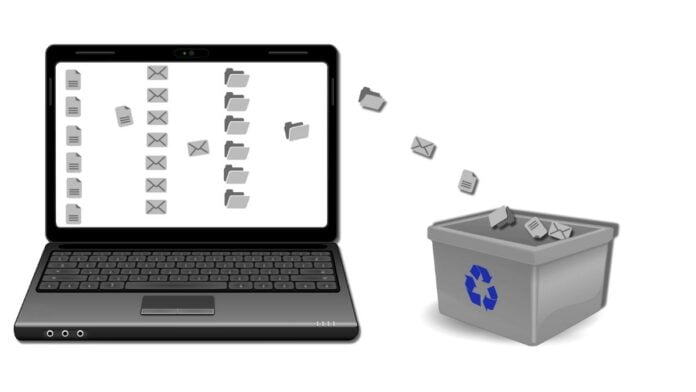Did you know that cluttered computers are a significant contributor to productivity losses? It was so much that over half of surveyed US office workers said they waste time trying to find computer files. They even reported spending more time locating those files than on their actual work.
So, if you’re on the same boat, it’s time you clean computer files to make your device more organized. That way, you don’t have to waste precious minutes digging for files you need. Besides, getting rid of unnecessary data can also help your PC or laptop stay in tip-top condition.
To that end, we came up with this guide discussing the top tips on how to clean computer files. Read on so that you can start organizing all that data you’ve got stored on your device.
Clean up Desktop Files and Folders
If you’re a Mac user, having tons of files on your desktop can result in a significant speed drop. However, that problem doesn’t seem to affect Windows computers. Still, having dozens, even hundreds of desktop files can make it harder for you to locate the ones you need.
So, if your desktop is full of icons, delete as many as those that you no longer need. You can then move those you do to other folders or subfolders.
Find and Delete Duplicate Files
In a recent survey of almost 3,000 individuals, 91% reported backing up their data. However, two in three of them still suffered from data loss incidents.
For that reason, experts recommend having three copies of your data. One is the primary copy (the original), while the other two are backups.
However, creating and syncing backups can also result in duplicate files. The same goes if you forget to delete backups you’ve already moved to other storage media.
You can always perform manual searches for files that you think have multiple copies. However, that can take a lot of time, especially if you’ve been using the same computer for years.
If you want the easiest, fastest way to locate all those copies, you can use a duplicate file finder instead. It’s a program that uses algorithms to look for exact replicas of files, such as text, PDF, photos, and even videos. Some can even locate files with similar content.
Once the duplicate finder gives you the search results, you can delete those you no longer need.
Get Rid of Downloaded Data
Whenever you download files, your computer stores them in the Downloads folder. Those include documents, PDFs, photos, videos, audio files, and other web content.
Those downloaded files, in turn, will remain in the Downloads folder until you delete them. Unfortunately, though, that also means they’ll continue taking up precious disk space.
So, make it a habit to delete the unneeded contents of your Download folder once every week or two. That way, you can prevent the files from eating away at your disk space.
Remove Screenshots
Screenshots taken on a Windows computer get stored in the Screenshots folder. That folder, in turn, is under the Pictures folder.
By contrast, the default save location of Mac screen captures is the desktop.
Now, note that each screenshot’s size can range from a few hundred KBs to 1 MB or even more. That depends on the size of the screen area you captured, as well as its contents. The more text, image, or colors the screenshot captured, the bigger its file size.
Since every byte of disk space matters, you’d want to keep your screenshots under control. As such, you should delete them as soon as they’ve served their purpose.
Empty Your Recycle Bin or Trash
When you delete a computer file, your device’s OS first moves it to a folder designed to hold deleted files. It’s a designated location serving as a temporary storage place for the removed files. That location is the Recycle Bin on Windows computers, while it’s the Trash folder on Apple Macs.
Either way, the files remain in storage until the folder reaches its pre-set maximum size. At that point, your computer will start removing the oldest files to make space for new ones.
However, you have the option to delete the temporarily stored files right away, at any given time. That’s by emptying the Recycle Bin or Trash. Doing so erases all contents of the folders permanently, thus, freeing up space on your drive.
Automate File Deletion in Recycle Bin or Trash
Both Recycle Bin and Trash allow computer users to automate the process of emptying them. You can set this feature up to avoid the hassle of removing the files they store all the time.
On Windows, you can automate the Recycle Bin to delete files after 1, 14, 30, or 60 days. You can do that by going to Settings and then System. Then, under System, choose the option that says “Change how we free up space automatically.”
On the next window, look for the section labeled “Temporary Files.” Then, mark the box beside “Delete temporary files that my apps aren’t using.” You can now select the number of days in the drop-down menu.
If you’re on Mac, go to the Apple menu by clicking the Apple logo at the top-right corner of the screen. Next, select the About this Mac option, and on the new window that appears, navigate to the Storage tab. You can then click the Manage button to the left of the small pop-up window.
From there, you should see a field labeled “Empty Trash Automatically.” Hit the Turn On button to the right side of that option. Once active, the Trash folder should automatically delete items over 30 days old.
Clean Computer Files to Free up Precious Disk Space
There you have it, your ultimate guide on how to clean computer files. So, starting today, follow as many of our tips so that you can recover disk space and use it for more essential items. What’s more, they can help you keep your files easier to locate and your device organized.
Are you looking for more tech tips and computer guides like this? Then feel free to head over to our site’s other categories for more informative posts!






